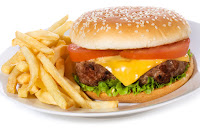Many had expected the 1.5C temperature goal to drop out of the draft text during the fortnight of negotiations. Now, as the dust settles after the landmark agreement, scientists are grappling with the feasibility of meeting this more ambitious target.
But there was one sector that was largely absent from the talks in Paris. It’s something that we rely on everyday, and continuing to ignore it could mean waving goodbye to that 1.5C goal. It’s food.
30% of emissions
Agriculture and the production of food, or “agri-food” for short, is a very significant emitter of greenhouse gases.
Producing our three square meals a day causes emissions of CO2 through agricultural machinery and transporting crops and animals, nitrous oxide from the use of fertilizers (synthetic and manure), and methane from livestock and flooded paddy fields for rice.
Furthermore, the demand for food has led to global expansion of farmland at a rate of about 10m hectares per year during the last decade. Some of this cleared land is – or was – tropical rainforest, adding more emissions and reducing the capacity of land to absorb and store carbon.
When you consider emissions according to the services we use on a day-to-day basis, agri-food accounts for approximately 30% of all greenhouse gas emissions.
...
Rising demand and emissions
...
[A]s the world’s population grows and becomes richer, the demand for food is expected to increase by 60% or more by 2050. Given recent trends, demand is likely to rise more quickly than supply towards the middle of the 21st century. This will increase pressure to convert land for farming.
Putting these drivers together suggests that emissions from agri-food will continue to grow. Changing farming practices could offset some of this increase, but achieving such changes is easier said than done.
A paper published this week, for example, reviews the various ways we can cut emissions from raising livestock. Options include using feed additives to reduce how much methane is created in the stomachs of animals, and sequestering carbon in the soils of grasslands where they graze. But limited take-up of new farming methods and high costs means that less than 10% of what is technically possible is currently economically viable.
Read more at Failure to Tackle Food Demand Could Make 1.5C Limit Unachievable

No comments:
Post a Comment